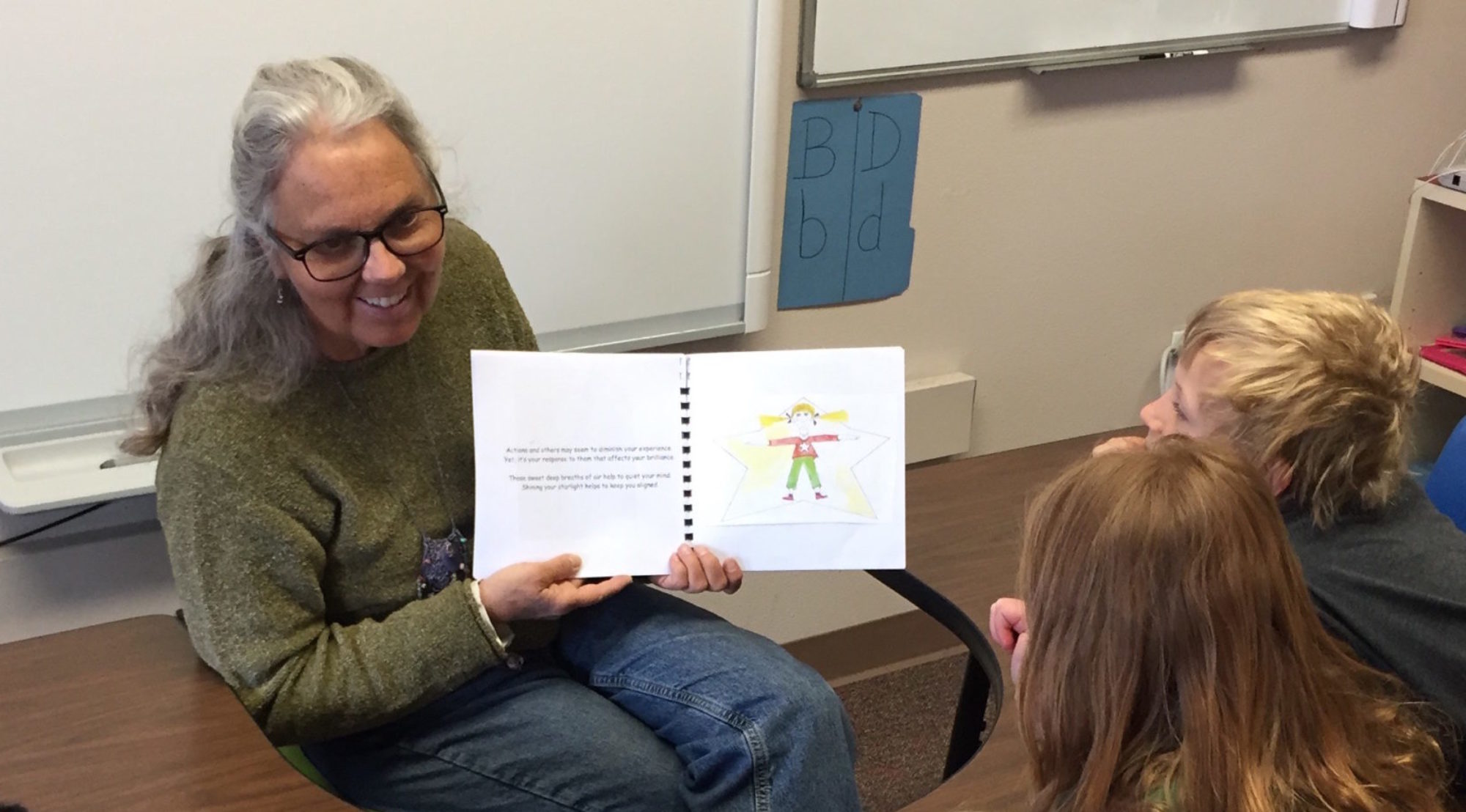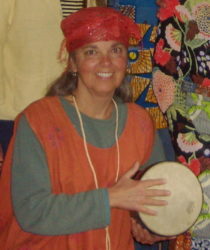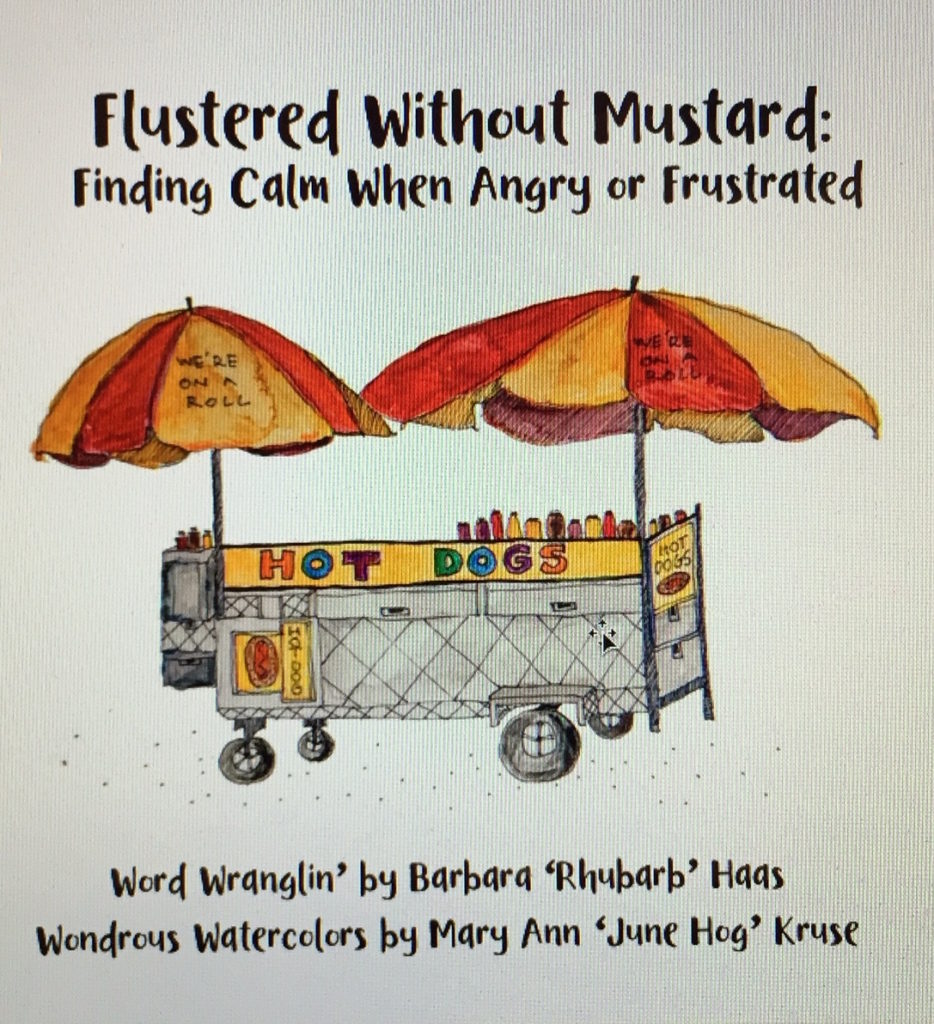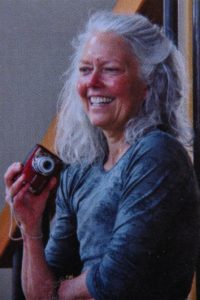Available on Amazon [BUY HERE] and from wholesaler IngramSpark!
Flustered Without Mustard:
Finding Calm When Angry or Frustrated
This rhyming picture book is about a hot dog vendor who ran out of mustard, which sets off a wide variety of customers’ reactions. The words and illustrations give ideas and concepts to consider when faced with unexpected situations, to take responsibility for our own emotions.
As a child when I was in the midst of any meltdown, my mom’s advice was always to “take three big breaths.” Research on mindfulness shows that focusing on slow breaths, or present awareness, helps to reduce anxiety and relieve stress. Schools and households around the world are enjoying the benefits of this simple technique.
The actual story takes about 15 minutes to read and could be read in 2 parts if necessary!
About the Author
Barbara “Rhubarb” Haas lives in Colorado’s Rocky Mountains with her husband, Chris, and their furry feline, Frank. She has been in the education field from the Madeline Hunter to the Kagan & Kagan eras, has taught many ages and many subjects, and spent most of her career with 5th graders. She honed her writing skills for her Masters in Education and beyond, as well as grant writing for her Artists-in-Residence programs. She has had several magazine articles and poems published, and is delighted to share her latest adventure in word wranglin’.
About the Illustrator:
Mary Ann Kruse, June Hog Designs, is recognized for her vibrant watercolor depictions of wildlife created with illustrative authenticity and a hint of artistic license for creative engagement. Fishes, birds, and bees are her usual subjects with their exceptional texture and hues, scales, feathers and fur. Honoring wildlife in their essential roles and paying tribute to their exquisite beauty, she now adds humans to her whimsical artwork. She lives with two felines, Ursa and Zubenelgenubi (aka Zube) in Oregon’s high desert where the scent of sage meets gnarled juniper.
Concepts for Flustered Without Mustard
The following books offered me the practical tools I needed to better understand and manage my own emotions, which allowed me to guide my students more effectively when dealing with their own wide range of feelings.
Brene’ Brown’s Daring Greatly
Esther Hicks’ Getting Into the Vortex Relationship Meditation
Sandra Ingerman’s How to Heal Toxic Thoughts
Harriet Lerner’s Dance of Anger and Dance of Connection
Marshall Rosenberg’s Non-Violent Communication
Marianne Williamson’s Return to Love
Quotes From Their Books:
Brene’ Brown
Daring Greatly: How the Courage to Be Vulnerable Transforms the Way We Live, Love, Parent, and Lead, Penguin Gotham Books (2012)
“What we know matters, but who we are matters more.”
“Connection is why we’re here; it is what gives purpose and meaning to our lives. The power that connection holds in our lives was confirmed when the main concern about connection emerged as the fear of disconnection; the fear that something we have done or failed to do, something about who we are or where we come from, has made us unlovable and unworthy of connection.”
Esther Hicks
The Teachings of Abraham: Getting into the Vortex, Relationship Guided Meditation,
Hay House, Inc. (2010)
“Sometimes it seems like others have the power to negatively affect your experience, but that is never true: only your response to them has the power to pinch you off from the naturally good-feeling person you are.”
“Sometimes others believe that their happiness depends upon your response to them, but that is never true; and if you encourage them to believe that – and stand on your head to please them – you don’t help them or you.”
Sandra Ingerman
How to Heal Toxic Thoughts, Sterling Publishing Company, Inc. (2007)
“Think of a precious image. The energy behind your emotions goes out to all living beings.”
Harriet Lerner
The Dance of Anger, Harper & Row, Publishers, Inc. (1985)
“Anger is a signal, and one worth listening to. Our anger may be a message that we are being hurt, that our rights are being violated, that our needs or wants are not being adequately met, or simply something is not right. Our anger may tell us that we are not addressing an important emotional issue in our lives, or that too much of our self – our beliefs, values, desires, or ambitions – is being compromised in a relationship.”
“Anger is something we feel. It exists for a reason and always deserves our respect and attention. We all have a right to everything we feel – and certainly our anger is no exception.”
“There is, however, another side of the coin: If feeling angry signals a problem, venting anger does not solve it. … Those of us who are locked into ineffective expressions of anger suffer as deeply as those of us who dare not get angry at all.”
The Dance of Connection, Harper Collins Publishers (2001)
” . . . establish some ground rules for fighting rather than assuming that feeling enraged (“I can’t help myself”) gives you license to say or do anything. If you can’t maintain control of your own voice, you need professional help.”
Marshall Rosenberg,
The Center for Non-Violent Communication
Non-Violent Communication: A Language of Life, PuddleDancer Press (2015)
“I see all anger as a result of life-alienating, violence-provoking thinking. At the core of all anger is a need that is not being fulfilled. Thus anger can be valuable if we use it as an alarm clock to wake us up – to realize we have a need that isn’t being met and that we are thinking in a way that makes it unlikely to be met.
“ . . . to fully express anger requires full consciousness of our need. In addition, energy is required to get the need met. Anger, however, co-opts our energy by directing it toward punishing people rather than meeting our needs. Instead of engaging in ‘righteous indignation,’ I recommend connecting empathically with our own needs or those of others. This may take extensive practice, whereby over and over again, we consciously replace the phrase ‘I am angry because they . . . ‘ with ‘I am angry because I am needing…‘“
The four steps to expressing anger are (1) stop and breathe, (2) identify our judgmental thoughts, (3) connect with our needs, and (4) express our feelings and unmet needs. Sometimes, in between steps 3 and 4, we may choose to empathize with the other person so that he or she will be better able to hear us when we express ourselves in step 4.
Marianne Williamson
A Return to Love, Harper One (1992)
“Ego says, ‘Once everything falls into place, I’ll feel peace.’ Spirit says, “Find your peace, and then everything will fall into place.’”




